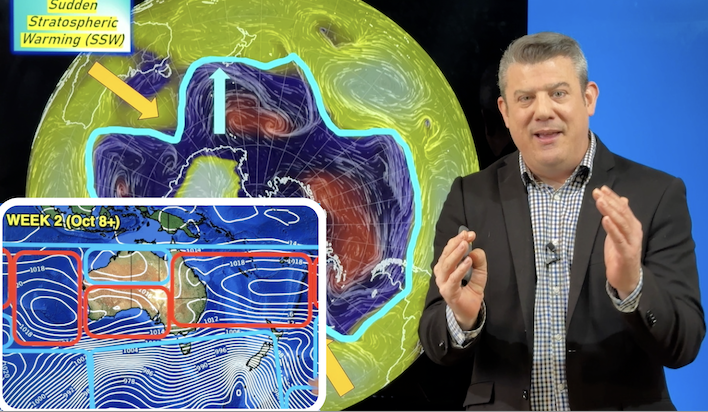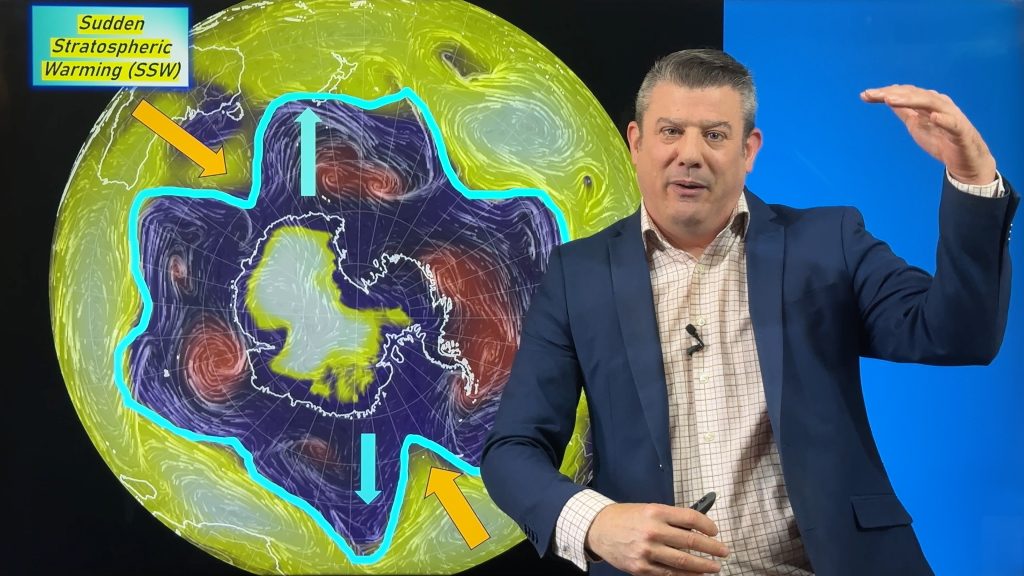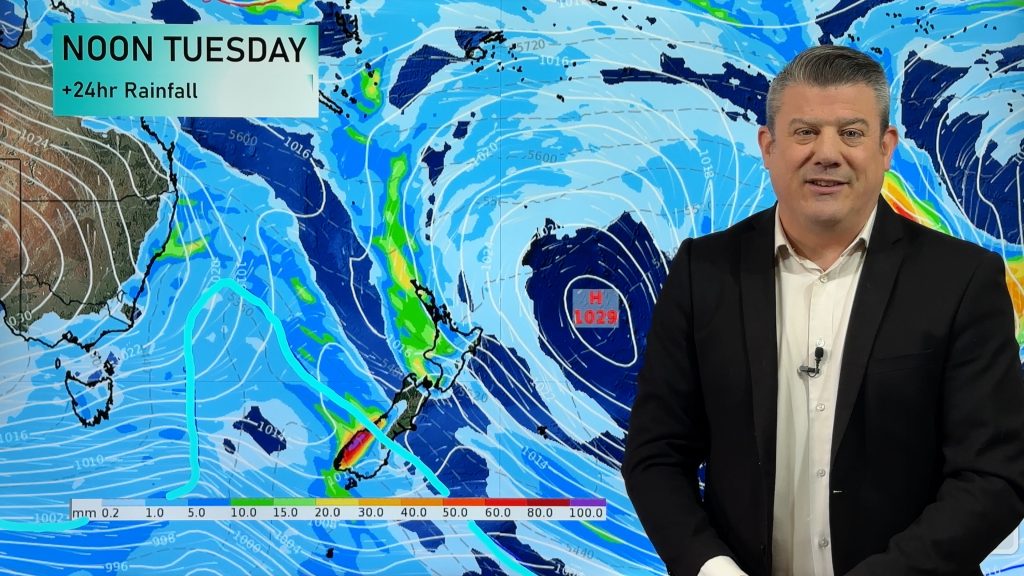
> From the WeatherWatch archives
Most Commented On Story — For the past 18 months global and local climate scientists have been calling for a “High” chance of El Nino forming, many saying it would be as brutal as the one in the 1990s that caused major droughts in New Zealand.
Despite the alarming prediction last summer passed us by with no El Nino.
After 18 months in the media the term “El Nino” has almost developed it’s own persona. It sounds like the Jesse James of the weather world.
My issue isn’t with the climate scientists thinking El Nino is coming – my issue is with the messaaging that comes with it – the high confidence it will happen…and then 18 months go by and it’s brushed off as ‘it’s still coming’. Well, we’ve had concerned farmers contacting us for 18 months – some in absolute fear about what El Nino might do to their farm.
We strongly feel at WeatherWatch.co.nz that all this talk is doing little good.
Put it this way – if we thought there was a high likelihood of a low in the tropics forming, and all the models suggested it would reach New Zealand in a weeks time. Do you think it would be crazy, a week before the low formed or even reached New Zealand, to put out warnings specifically talking about which rivers will flood here, and how much they will flood by, and which properties will be affected? It would – because even if the low forms and hits NZ we can’t know where it will be most intense until it has truly already formed.
That’s a little bit like these big El Nino predictions. The computer models, which are sometimes reliable, sometimes not, suggest El Nino is forming. But it’s far too early for us in New Zealand to be locking in which regions will miss out on rain and who is exposed to droughts.
This is especially the case in New Zealand where even if we have El Nino (or it’s opposite La Nina) we are just two small, mountainous islands that jut out into the roaring 40s. Anything can happen to our weather – as we’ve seen over the past 18 months.
So until a strong, powerful, El Nino pattern starts to form – it’s very tricky to start predicting which regions would be worst impacted. General thinking is that eastern areas would be driest – as El Nino tends to encourage more west to south west winds in New Zealand. But if those winds tilt a bit more southerly it could mean plenty of moisture makes it up our east coast too.
To make matters worse, NIWA here in New Zealand (where climate scientists are based) has become commercially aggressive. Meaning they won’t proactively work with the private weather sector in New Zealand to ensure the public are truly understanding what is happening communications-wise. In fact, WeatherWatch.co.nz has to now contact climate scientists in other nations due to NIWA’s own powerful financial interests here in New Zealand. A truly terrible set up, one that we have recently raised in a formal complaint with the Minister for CRI’s, Steven Joyce.
So the messages surrounding El Nino will continue – as they have done so for 18 months – with little to no questioning about the accuracy of them, why they are being made, how they are being made, and precisely what it means to the public.
We get forecasts wrong here at WeatherWatch.co.nz – we all make mistakes. Which is why communicating your message is so incredibly important. And judging by the daily comments and questions we’ve had from the public for a full year and a half now, it’s very clear the official communications surrounding El Nino forecasts have failed to make sense while they have succeeded at confusing the public.

WHAT IS EL NINO?
Quite simply, El Nino is a set up when the warmer waters of the Pacific Ocean, near the equator, are blown towards South America and away from New Zealand and Australia. This creates a large area of warmer than average sea surface conditions in the eastern Pacific – this helps makes more lows which causes rain and floods for western areas of the Americas. Here in New Zealand and Australia the cooler waters means we have less sub-tropical lows and more highs parked over the Tasman Sea.
It’s the location of these frequent highs (over the Tasman) that can give New Zealand headaches during El Nino. It encourages more west to south west winds – in turn that puts more rain clouds on the west coast and much drier, windier, weather in the east. It can then lead to droughts inland and in our east if it continues for several months.
That’s the reason there is concern with El Nino.
But remember, New Zealand is two small islands in the South Pacific – so even if El Nino forms, our weather can still be varied and changeable.
SO, WHAT IS LA NINA THEN?
The opposite of El Nino. It’s when that warm water gets blown westwards towards New Zealand and Fiji and Australia. We get more humidity, more rain and more tropical cyclones. La Nina often affects the North Island even more, as it’s exposed to the sub-tropical lows. La Nina summers can be hot, humid but sometimes quite cloudy.
SO WHAT WILL HAPPEN WITH EL NINO THIS YEAR?
Like we said – making definite long range seasonal forecasts is a risky business. For 18 months we’ve seen this. Our feeling is that for now our weather pattern is quite normal – we’re seeing fairly average weather for the end of Autumn and start of Winter. Rain has been returning to drought areas – this doesn’t usually happen in a serious El Nino event.
As for later this year, spring and summer – it’s too far to see. We know there will be tropical storms this summer – we can’t lock in where and what dates. Same with El Nino – it seems many computer models and climate experts think it’s coming. It may well be. So farmers in the east should have plans in case the rains stop this spring. In the mean time – we should stop putting “El Nino” in the lime light. It’s like we’re obsessed with something most of us don’t even really understand. Until we start to see hard evidence El Nino is truly changing the climate across New Zealand this year, our forecast will remain the same: We’re two small mountainous islands in the roaring 40s – anything can happen.
– WeatherWatch.co.nz
Comments
Before you add a new comment, take note this story was published on 28 May 2015.






Add new comment
Guest on 29/05/2015 7:45am
Great explanation.
More tropical storms this year then?
Becoming a bit interested in weather as a hobby so a big thanks for the work you do here!
Can you recommend anywhere else on the web which is useful for someonewith a recreational interest in weather?
Reply
Guest on 28/05/2015 9:57pm
We having our third dry year in a row unless the weather gets cracking…..We need 1400 mils in 7 months to just get average rain or its the third dry year in a row…….aus and the west coast are due for droughts not us
Reply
Guest on 27/05/2015 10:21pm
Hi Guys. Does El Nino affect New Zealand in the winter or will New Zealand get typical winter like weather this year? When does El nino typically develop.
Jacob
Reply
WW Forecast Team on 27/05/2015 10:38pm
Hi there, it can really form at any time but usually the effects of it are most noticeable in spring in summer. There’s quite a complicated science to declaring it and everything needs to line up for this to happen – which is a tricky thing when you consider we’re talking an area that stretches from Australia to South America! Computer modelling is hugely important to help work out when El Nino has formed/eased etc.
Cheers
Phil
Reply
Matt on 27/05/2015 10:10am
Thank you for the great article 🙂
Just today at university we were talking about how some scientific corporations use information to maximise their profits. I kept arguing that science is used for benefiting the community, but here you bring the example of metservice and their commercialization of their services !!!
So Ihave a question, is weatherwatch not supported by our government?even though your services are to the public ? (i.e. your services are available to us )? if that is the case what makes metservice worthy of funding and not you guys?
again thanks for all the services you provide !
Reply
WW Forecast Team on 27/05/2015 9:13pm
Hi Matt, thanks very much for your comments – very interesting too!
We actually are going ask universities for their help across NZ because they are also stung huge fees to share scientific data, which is utterly insane as it benefits ALL NZers.
No, WeatherWatch is not supported by the Govt. Due to the two Govt forecasters not being up to the task WeatherWatch won a small contract by the Ministry for Primary industries to do drought forecasting, but it was only for a couple of months.
The tens of millions of funding goes directly to MetService and NIWA without ever being challenged – and in the last budget MetService got a multimillion dollar cash injection to build another building in case their Wellington one is hit. My question – if they make double record profits why can’t they pay for this, why do tax payers have to fund a super rich company? NIWA makes even more, significantly more, off the tax payer. In all other western countries these two organisations would work as one and both woud be entirely free for businesses, students and the public to use. In NZ both of them use the data taxpayers have funded, to double charge it back to maximise their profits. Both NIWA and MetService make yearly record profits, often double record profits – it’s a joke that they need so much tax payer help and it’s a joke they need to limit access to data we all own. Both management at NIWA and MetService forget both of their businesses are 100% fully owned by us – the tax payers.
Thanks for your thanks!
– Philip D
Reply
View more comments